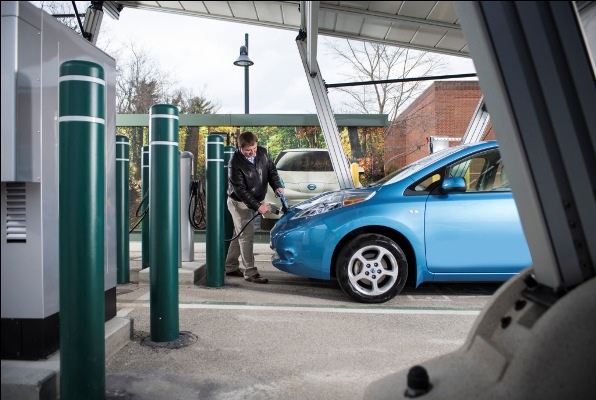Households with one Electric Vehicle (EV) could consume 37 percent more daily energy, according to ABI Research.
Use of EVs will shift peak demand in homes from 4-8 kWh to 11 kWh, creating new loads. Higher EV adoption will increase the risks of electricity outages in peak periods because the available energy supply will be insufficient to satisfy the demand.
While many regions in the Unites States have enough electrical energy available to meet the future EV demand, energy supply is not always available when needed. Places like Texas, California, and China are already facing grid imbalances caused by increased electricity usage in peak times.
California, for example, witnessed an all-time electrical grid peak load record in 2022, reaching 55,061 Megawatts (MW). That is 6,155 Kilowatts (kW) above the average peak over the past 20 years and enough to power 4.6 million houses.
“In the face of these facts, OEMs, end consumers, governments, grid operators, utilities, and other energy supply and distribution stakeholders must work together to enable a smooth transition from ICE to EVs,” James Hodgson, Smart Mobility and Automotive Principal Analyst at ABI Research, said.
Because re-energizing the existing electrical infrastructure is resource and time intensive, the industry is exploring alternative solutions with a quicker turnaround. Smart charging is, by far, the least complex and most effective tool.
Provided chargers are connected to charging operators, strategies such as dynamic power sharing – the ability to control the energy available to plugged-in EVs preventing sites from exceeding their maximum energy capacity – and dynamic pricing – the ability to influence customer behavior by altering price per kWh based on utilization – can easily be deployed with significant results.
When chargers and vehicles are connected to the grid, users can sign up for demand response programs and get energy bill rebates or other financial incentives by shifting charging time from peak to off-peak hours or allowing utilities to remotely control the time and rate that plugged EVs are charged. According to OVO Energy, residential flexibility can generate US$6.8 billion in cost savings for the whole system in the UK.
Combining smart charging approaches with bidirectional energy flow opens the possibility of V2G applications, in which EV batteries store excess energy during off-peak times and become energy resources during peak times.
Activities by companies like Nuvve show that V2G has a clear ROI for vehicle fleets, especially school buses, but the business model in the consumer segment is still weak. Kaluza reports that end consumers enrolled in its V2G trial earned an average of £420 a year by selling surplus energy back to the grid.
Other effective EV charging optimization solutions include battery-buffered chargers such as ADS-TEC Energy’s ChargeBox, energy storage, microgrids, charging hubs, and swappable batteries like NIO’s.

